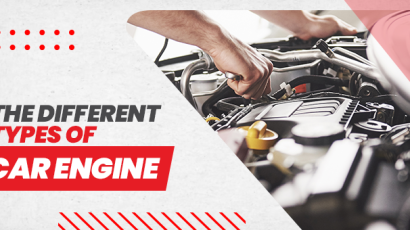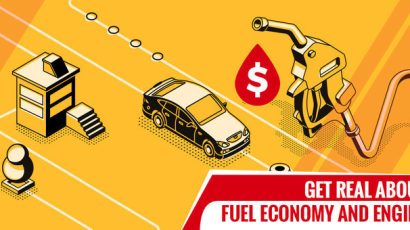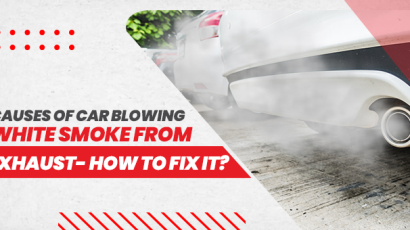
Engines are the heart of the vehicle, whether a car, truck, or minitruck. The engine is one of the most crucial parts of a vehicle to let it keep going on the road smoothly. However, there are different parts of a car engine. Each part plays a specific role in keeping the engine functioning. Let’s discuss some of these parts here:
1. Engine Block
The main and first part is the engine block. Usually, it is constructed using aluminum and iron. Being the most crucial part of the engine, it prevents overheating.
The engine block is perforated and contains cylinders. It also enables the flow of petrol and water to ensure that the engine is super-lubricated. A perfectly working engine block will surely let your engine score extra points on the road.
2. Engine Valves
Regulating water, air, and exhaust gas are one of the most important things in a well-functioning engine. The engine valve is crucial to its functioning.
Engine Valves are usually used to allow or restrict the fuel flow in the engine. It is used in internal combustion. Rarely, but these valves get damaged whenever they come in direct contact with the piston. So, it is imperative that one be careful with them.
3. Spark Plug
As a car owner, you must be aware of the spark plug’s importance and the problems you face if there is any serious problem with it. The spark plug is a miniature device that delivers current to the fuel combustion mechanism and is what ignites it. To reach this chamber, the current passes from the ignition chamber.
A spark plug is covered with a ceramic insulator, enabling it to perform its function even better.
4. Oil Filter
The oil filter is yet another significant part of the engine. Sometimes, impure oil with too much residue is poured into the engine. We may not realize it, but it affects the engine’s overall performance. It is where the oil filter enters the scene.
The primary aim of the oil filter is to filter the fuel poured into the engine. It holds back the residue, stones, and anything that is not great for your engine and lets the pure oil pass through.
5. Piston
Combustion is one of the most important processes held in a car’s engine. The piston is the main part of the engine that helps in the completion of this process.
The movement of this part is upward and downward in the cylinder, which enables it to participate in the combustion process. The diameter of this part is slightly less than that of the cylinder’s bore.
6. Cylinder Head
We all know that cylinders are a must-have part of an engine. However, the engine head is attached to the engine with the help of a few bolts. The head gasket later seals it.
The cylinder head contains a few of the most crucial parts of the vehicle’s engine. These include valve lifters, valve springs, valves, pushrods, camshafts, and rockers. All of these parts function together to keep the engine working.
7. Camshaft
The camshaft is usually located in the cylinder head. Basically, cams are mounted on the camshaft. The devices play a significant role in changing the rotatory motion of the camshaft.
Alloy steel and iron are used to make these camshafts. These materials are used to provide surface hardness to the engine. The camshaft is fitted on the internal combustion engine. This part of the engine’s prime function controls the valve’s movement.
8. Combustion Chamber
The chamber is in the cylinder. It ignites the fuel within the chamber, enabling the vehicle to move smoothly on the road. The process of ignition is as follows:
- The piston compresses the fuel
- After compression, the fuel makes immediate contact with the spark plug.
- Later the mixture is pushed toward the combustion chamber.
- From the chamber, the mixture is released in the form of energy
- This energy facilitates the engine, letting the car move on the road.
9. Piston Ring
Piston rings are of steel and iron. These metallic rings are attached to the posterior side of the steam engine or the piston. These rings seal the combustion chamber and improve heat transfer from the piston to the cylinder wall.
10. Carburetor
Are you aware of the term carburetor? The carburetor mixes the fuel and air in the combustion chamber. This process of mixing is known as carburation.
This word may sound weird, but it originated from the English verb “carburet.” The component governs the flow of oxygenated air and petrol or any other fuel type in the combustion chamber. There are three general types of carburetors, and they are as:
1. Multiple Venturi Carburetor
2. Constant Choke Carburetor
3. Constant Vacuum Carburetor
If not regularly serviced and checked, issues may arise with the carburetor. Here are the signs indicating that your engine needs instant attention.
1. The car doesn’t start in the first or second go
2. There’s dirt in the carburetor
3. Car releasing black smoke
4. Wet spark plug
Last Words
The engine is a crucial part of any vehicle, akin to the heart within the human body. Without an engine, there is no concept of the vehicle moving from its place. However, the engine has several parts that function together to provide a smooth driving experience to those enjoying the ride.
Each part of the engine is as important as the engine to let the car move forward from the piston, piston rings, cylinder rings, camshaft, and craft shaft to engine valves, carburetor, flywheel, manifold, and crankshaft. All of these engine parts combine to form a smoothly functioning engine. If any one of the engine’s parts has malfunctioned, the engine will not function as it should.
To keep the engine in working condition, it is important to maintain it weekly. Therefore, regular oil changes, changing engine hoses and belts, and getting a flush can surely help keep your engine healthy.











